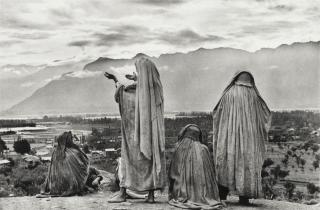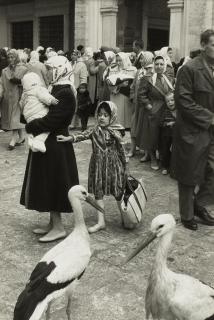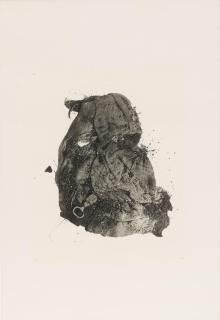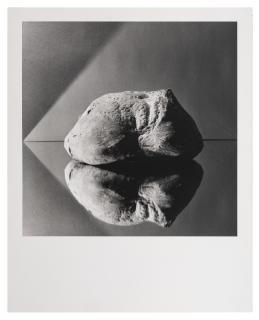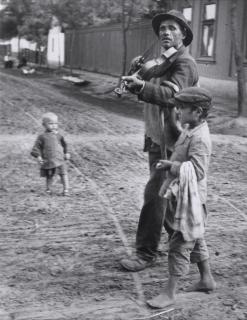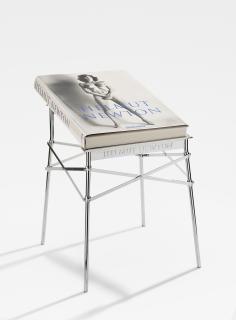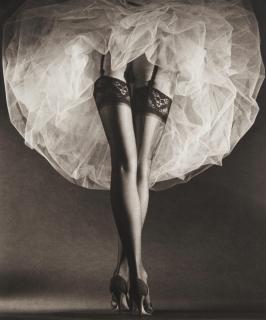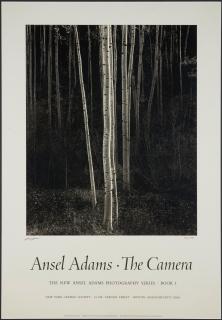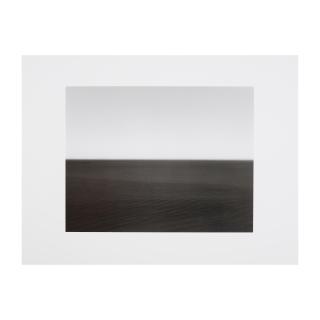Henri Cartier-Bresson 1908 - 2004
The artist Henri Cartier-Bresson
- Contemporary French photographer, director, actor, draughtsman and painter.
- Known for his black-and-white photography as well as photos of the liberation of Paris in 1945.
- Considered a pioneer of street photography and co-founder of the Magnum Photos agency.
Born on 22 August 1908 in Chanteloup-en-Brie, Henri Cartier-Bresson was a French photographer, director, actor, draughtsman and painter. He studied painting with André Lhote in Paris until 1928 and turned to photography beginning in 1930. He gained experience in New York with Paul Strand and travelled to the Ivory Coast in 1931 - this stay resulted in his first major travel reportage. His work quickly found favour and was shown in magazines and at exhibitions. From 1937 to 39 he worked as an assistant director on several films by Jean Renoir, before he was taken prisoner of war in Germany for almost three years in 1940. Three years later, he managed to escape to Paris, where he joined a group of photographers from the French Resistance and documented the period of German occupation and the liberation of Paris.
In 1947, Cartier-Bresson founded the photo agency Magnum Photos in New York with the artists Robert Capa, David Seymour, George Rodger and William Vandivert. In the course of his life, he undertook many more journeys, including to Pakistan, Mexico, India, the USA and the then Soviet Union. In the process, he captured many political events of the 20th century, including the birth of the People's Republic of China in 1949 and the independence of Indonesia.
His work was collected and published in various photo volumes, such as Images à la sauvette (1952). Cartier-Bresson's photographs were the first ever to be exhibited at the Louvre (Paris) in 1955. Seventeen years later, in 1972, he stopped working professionally as a photographer and turned his attention increasingly to the art of drawing. In 1970, Henri Cartier-Bresson got married for the second time, marrying the Belgian photographer Martine Franck, with whom he spent the rest of his life. He died on 3 August 2004 in Montjustin in southern France.
Cartier-Bresson's dramatic images are among the most famous photographs ever taken, and not only because of the socio-political images. He kept his work exclusively in black and white because, in his opinion, it had a more intense artistic effect. At the same time, a picture composition that was thought through down to the smallest detail was of elementary importance to him when taking photographs: in 1952, he established his theory of "the photography of the decisive moment", which could be found early on in his war reportages. Influences of Cubism and Surrealism around André Breton can be seen in his work. He himself was inspired in particular by Man Ray, André Kertész and Eugène Atget.
Der Künstler Henri Cartier-Bresson
- Zeitgenössischer französischer Fotograf, Regisseur, Schauspieler, Zeichner und Maler.
- Bekannt durch seine Schwarzweißfotografie sowie Fotos der Befreiung von Paris 1945.
- Gilt als Vorreiter der Straßenfotografie und ist Mitbegründer der Fotoagentur Magnum Photos.
Der am 22.0.1908 in Chanteloup-en-Brie geborene Henri Cartier-Bresson war ein französischer Fotograf, Regisseur, Schauspieler, Zeichner und Maler. Er studierte bis 1928 in Paris Malerei bei André Lhote und wandte sich ab 1930 der Fotografie zu. Er sammelte Erfahrungen in New York bei Paul Strand und reiste 1931 in die Elfenbeinküste – aus diesem Aufenthalt ging seine erste große Reisereportage hervor. Seine Arbeiten fanden schnell Anklang und wurden in Zeitschriften und auf Ausstellungen gezeigt. Von 1937 bis 39 arbeitete er als Regieassistent bei mehreren Filmen von Jean Renoir, bevor er 1940 für knapp drei Jahre in deutsche Kriegsgefangenschaft geriet. Drei Jahre später gelang ihm die Flucht nach Paris, wo er sich einer Gruppe von Fotografen der französischen Résistance anschloss und die Zeit der deutschen Besatzung sowie die Befreiung von Paris dokumentierte.
1947 gründete Cartier-Bresson in New York mit den Künstlern Robert Capa, David Seymour, George Rodger und William Vandivert die Fotoagentur Magnum Photos. Im Laufe seines Lebens unternahm er noch viele Reisen, unter anderem nach Pakistan, Mexiko, Indien, in die USA und die damalige Sowjetunion. Dabei hielt er viele politische Ereignisse des 20. Jahrhunderts fest, darunter 1949 die Entstehung der Volksrepublik China sowie die Unabhängigkeit Indonesiens.
Seine Arbeiten wurden gesammelt und in verschiedenen Fotobänden, wie 1952 in Images à la sauvette (zu Deutsch: Bilder im Vorübergehen), veröffentlicht. Als erste Fotografien überhaupt wurde Cartier-Bressons Werke 1955 im Louvre (Paris) ausgestellt. Siebzehn Jahre später, 1972, beendete er die professionelle Arbeit als Fotograf und wandte sich vermehrt der Zeichenkunst zu. Henri Cartier-Bresson heiratete 1970 in zweiter Ehe die belgische Fotografin Martine Franck mit der er bis zu seinem Lebensende zusammen blieb. Er starb am 03.08.2004 im südfranzösischen Montjustin.
Die dramatischen Bilder Cartier-Bressons zählen nicht nur wegen der gesellschaftspolitischen Abbildungen zu den berühmtesten Fotografien überhaupt. Er hielt seine Werke ausschließlich sind in Schwarzweiß, weil sie seiner Ansicht nach so eine intensivere künstlerische Wirkung ausstrahlten. Dabei hatte eine bis ins kleinste Detail durchdachte Bildkomposition für ihn beim Fotografieren eine elementare Bedeutung: 1952 stellte er seine Theorie »der Fotografie des entscheidenden Augenblicks« auf, die sich schon frühzeitig in seinen Kriegsreportagen wiederfinden ließ. In seinen Arbeiten sind Einflüsse des Kubismus und des Surrealismus um André Breton zu erkennen. Er selbst sah sich vor allem von Man Ray, André Kertész und Eugène Atget inspiriert.
Henri Cartier-Bresson in a nutshell
Henri Cartier-Bresson was a French photographer, director, actor, draftsman, and painter known for his snapshots of the Spanish Civil War and major political events, including the 1945 Liberation of Paris. He became a pioneer of street photography for his ability to observe the »one« moment.
Henri Cartier-Bresson's multifaceted oeuvre does not follow a clear line in terms of motif. Cartier-Bresson is known for his lasting images of the Spanish Civil War (1936-1939) and for his narrative photographs of everyday life. He had an eye for »the extraordinary in the banal« and captured brief, decisive moments. At a time when taking photographs with a camera was still precious and associated with material expenditure, he noted for his artistic snapshots that »head, eye, and heart [...] had to be brought in line« in order to fully capture the complexity of the moment - he described himself as a »reporter« and his photographs as a »diary«. Yet his favorite subjects have always been people, especially the expressions on their faces and the individual stories they tell. He is also considered a pioneer of street photography.
Cartier-Bresson was a patient observer, a reporter who always waited for the right moment. He had gained experience as an assistant director in the early days of film, and applied the way he looked at scenes with actors to his photography. He was also an actor himself, working in an interdisciplinary way - even before documenting the Spanish Civil War, he went on reportage trips from which he brought back photo series that were also published in magazines. Cartier-Bresson was working on the threshold between film, photography, and journalism. He combined the moving impressions of certain scenes through observation with his interest in set design and film.
For a comprehensive overview, see the book Who are you, Henri Cartier-Bresson? (original title: De qui s'agit-il?, 2003).
Cartier-Bresson is said to have a »cinematic eye«. Composition, dramaturgy, and framing reveal the artist as a cinematographer who transferred his skills to photography. He had practiced serial vision with Jean Renoir in 1936, so his approach to photography was more narrative than static. Movement in the image was central to Cartier-Bresson's work; he waited for a stage-like detail before releasing the shutter - which is why his photographs usually have the unmistakable narrative drama for which he is so well known today.
Some of his contemporaries were very fond of this style. Among them was his colleague Richard Avedon, who once paid tribute to Cartier-Bresson with the following words: »He is the most complete, the most important of all of us, in all aspects: Social or political, he covered it all. He is simply the best photographer of the 20th century.«
Born in Chanteloup-en-Brie, a small suburb east of Paris, Henri Cartier-Bresson grew up both in Normandy and in Paris, where he also studied. He made a number of trips to take photographs. One of his first took him to the Ivory Coast. Getting hands-on experience in New York, shooting the crowning of George VI in London and the Spanish Civil War in different cities. From 1940 to 1943, he was a German prisoner of war, but escaped back to Paris. In 1947 he co-founded Magnum Photos, and in 1948 he went to India. He spent the next two years in China and Indonesia. Cartier-Bresson traveled extensively throughout Europe, Pakistan, the United States, the Soviet Union, Mexico, and Cuba, but he always returned to Paris. There, with his wife, he founded the Fondation Henri Cartier-Bresson in the Quartier du Montparnasse. He died in 2004. He was buried in the town of Montjustin, in the Provence-Alpes-Côte d'Azur region.
Häufige Fragen zu Henri Cartier-Bresson
Henri Cartier-Bresson war ein französischer Fotograf, Regisseur, Schauspieler, Zeichner und Maler, der bekannt wurde für seine Momentaufnahmen aus dem Spanischen Bürgerkrieg und anderen wichtigen politischen Szenarien, wie etwa der Befreiung von Paris 1945. Seine besondere Beobachtungsgabe für den »einen« Augenblick ließ ihn zum Vorreiter der Straßenfotografie werden.
Das vielschichtige Œuvre von Henri Cartier-Bresson folgt aus motivischer Sicht keiner klaren Linie. Bekannt ist Cartier-Bresson auf der einen Seite für seine nachhaltig eindrücklichen Aufnahmen aus dem spanischen Bürgerkrieg (1936-1939) und für seine erzählerischen Fotografien des Alltäglichen auf der anderen Seite. Er hatte ein Auge für »das Besondere im Banalen« und hielt kurze, entscheidende Augenblicke fest. In einer Zeit, in der Aufnahmen mit dem Fotoapparat noch kostbar und mit Materialaufwand verbunden waren, stellte er für seine kunstvollen Schnappschüsse fest, dass »Kopf, Auge und Herz [...] auf eine Linie gebracht werden« müssten, um die Komplexität des Moments vollends aufgreifen zu können – er selbst beschrieb sich als »Reporter«, seine Fotos als »Tagebuch«. Zu seinen beliebtesten Motiven gehörten trotzdem immer die Menschen, ganz besonders der Ausdruck ihrer Gesichter und die individuellen Geschichten, die sie erzählten – er gilt auch als Pionier der Straßenfotografie.
Cartier-Bresson war ein geduldiger Beobachter, ein Reporter, der immer auf den richtigen Moment wartete. Er sammelte Erfahrung als Regieassistent im frühen Filmzeitalter, wandte die Art auf schauspielerische Szenen zu blicken auf die Fotografie an. Er schauspielerte auch selbst, arbeitete im Prinzip interdisziplinär- Er unternahm schon vor der Kriegsdokumentation im Spanischen Bürgerkrieg Reportagereisen, von denen er Fotostrecken mitbrachte, die auch in Zeitschriften veröffentlicht wurden. Cartier-Bresson arbeitete an der Schwelle zwischen Film, Fotografie und Journalismus. Er verband die bewegten Eindrücke bestimmter Szenen durch Beobachtung mit seinem Interesse für Bühnenbild und Film.
Einen umfassenden Überblick gibt das Buch Wer sind Sie, Henri Cartier-Bresson? (original: De qui s'agit-il?, 2003).
Cartier-Bresson wird ein »filmischer Blick« nachgesagt. Komposition, Bilddramaturgie und -ausschnitt erzählen von dem Künstler als Kameramann, der sein Können auf die Fotografie übertrug. Er hatte sich bei Jean Renoir 1936 während Dreharbeiten im seriellen Sehen geübt, weshalb er sich auch beim Fotografieren mehr auf ein Narrativ, denn auf ein starres Motiv stützte. Bewegung im Bild war das Zentrum von Cartier-Bressons Schaffen, er wartete auf einen bühnenartigen Ausschnitt, bis er auf den Auslöser drückte – deshalb haben seine Aufnahmen meist die unverkennbar erzählerische Dramartugie, für die er heute so bekannt ist.
Einige seiner Zeitgenossen waren von diesem Stil sehr angetan. Dazu gehörte auch sein Kollege Richard Avedon, der Cartier-Bresson einmal mit den folgenden Worten gehuldigt hat: »Er ist der kompletteste, wichtigste von uns allen, in allen Gesichtspunkten: Ob sozial oder politisch – er deckte alles ab. Er ist schlicht der beste Fotograf des 20. Jahrhunderts.«
Geboren wurde Henri Cartier-Bresson in Chanteloup-en-Brie in einem kleinen Vorort östlich von Paris und wuchs sowohl in der Normandie als auch in Paris auf, wo er auch studierte. Er unternahm zahlreiche Reisen, um zu fotografieren. Eine seiner ersten führte ihn zur Elfenbeinküste. Er sammelte Praxiserfahrung in New York, hielt die Krönung von Georgs VI. in London fest oder nahm Szenen aus dem spanischen Bürgerkrieg in verschiedenen Städten auf. Von 1940 bis 1943 befand er sich in deutscher Kriegsgefangenschaft, konnte aber anschließend wieder nach Paris entkommen. 1947 gründete er zusammen mit Kollegen die Agentur Magnum Photos, 1948 verbrachte er in Indien. Die beiden Jahre darauf reiste er nach China und Indonesien. Cartier-Bresson befand sich lange Zeit auf Reisen durch Europa, nach Pakistan, in die USA, die Sowjetunion, nach Mexiko oder Kuba – zurück verschlug es ihn aber immer wieder nach Paris. Dort gründete er zusammen mit seiner Frau auch die Fondation Henri Cartier-Bresson im Quartier du Montparnasse. Beerdigt wurde er nach seinem Tod 2004 in der Gemeinde Montjustin, die in der Provence-Alpes-Côte d’Azur liegt.


